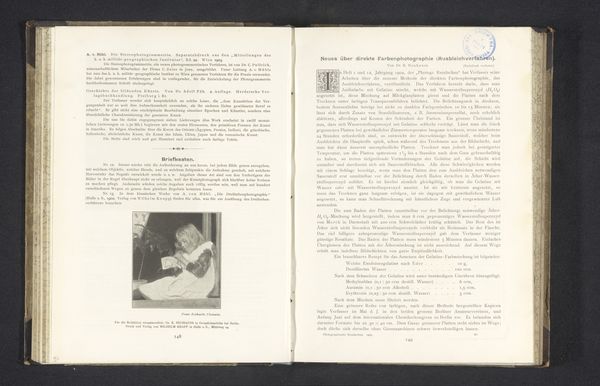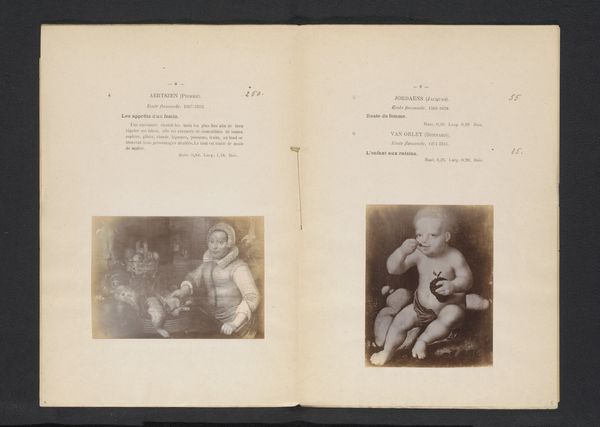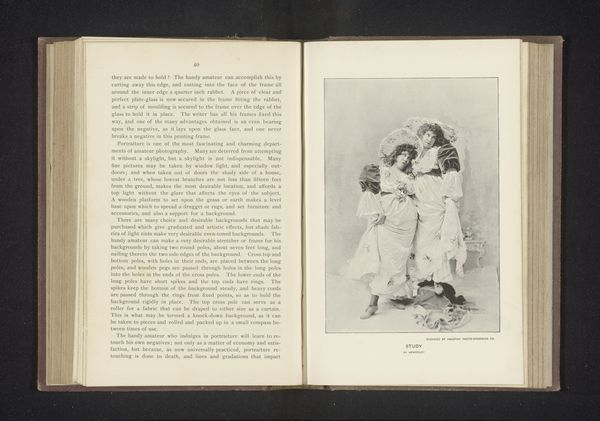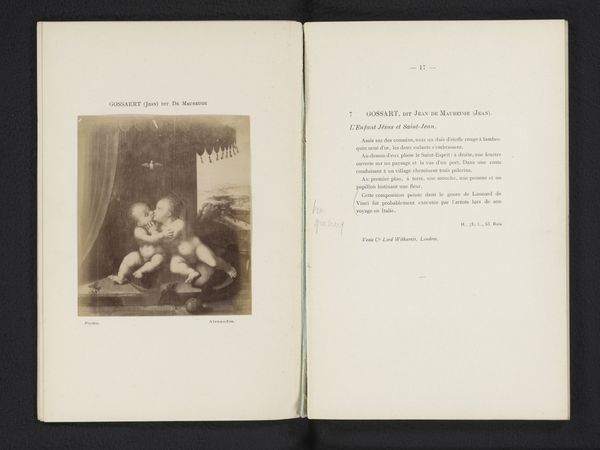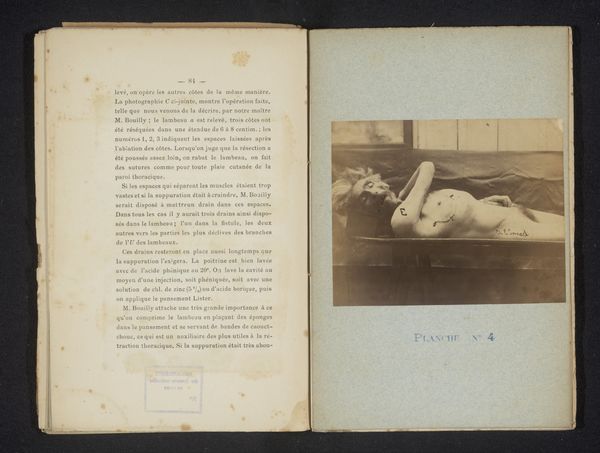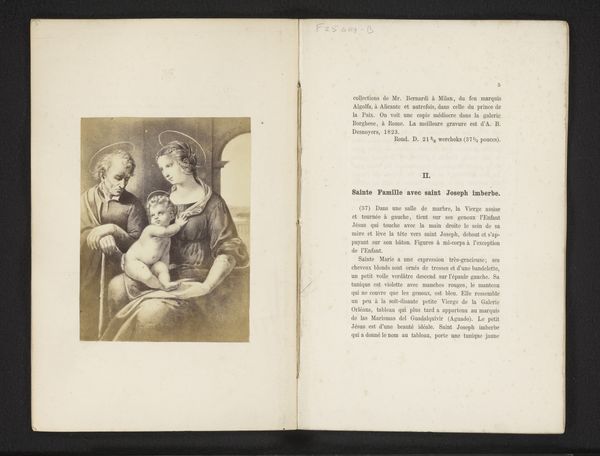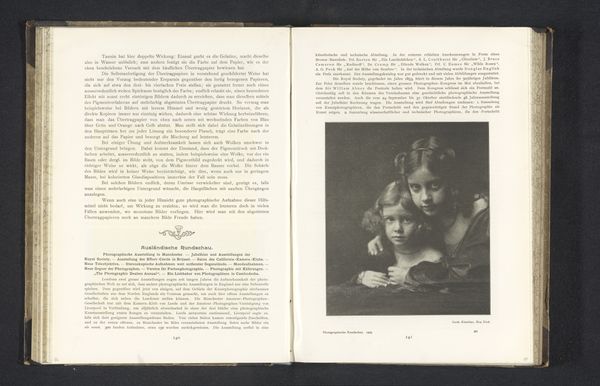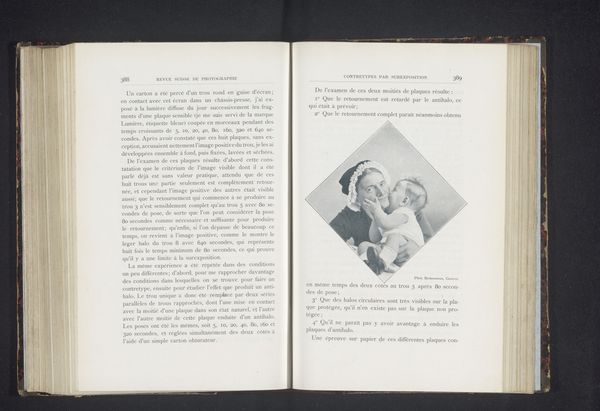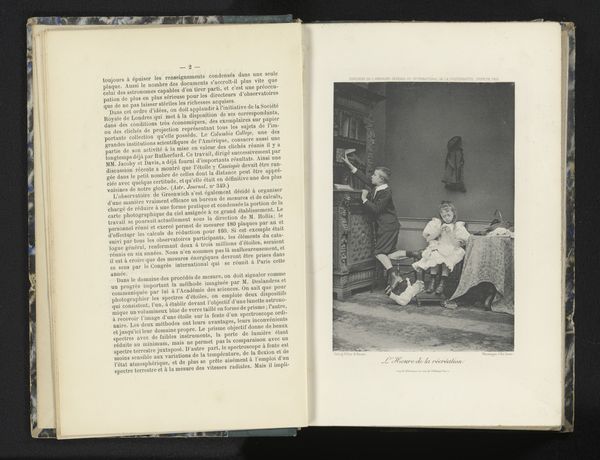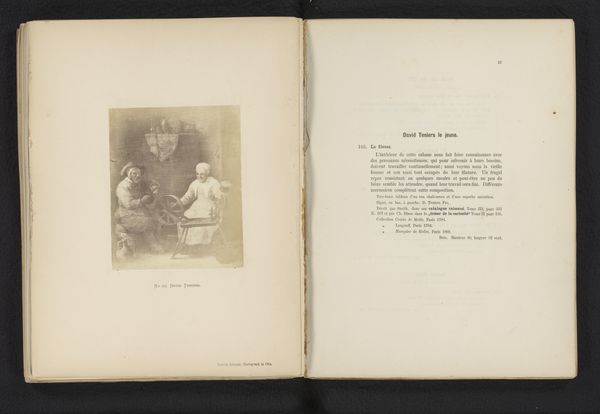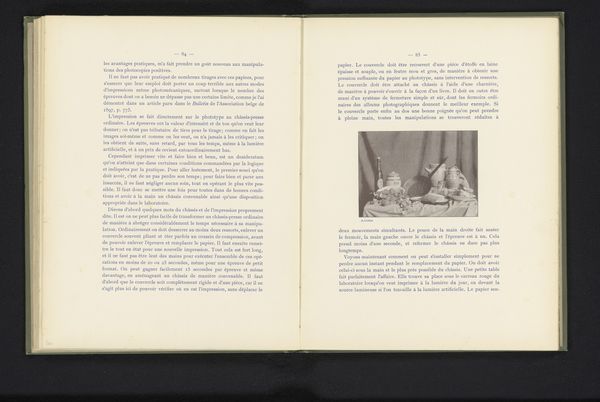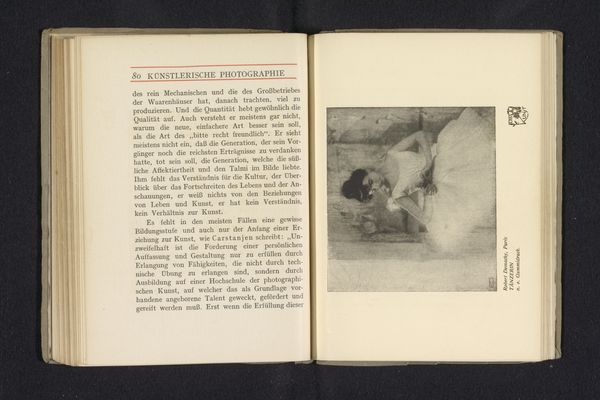
photography, gelatin-silver-print
#
portrait
#
art-nouveau
#
mother
#
photography
#
gelatin-silver-print
#
genre-painting
Dimensions: height 154 mm, width 126 mm
Copyright: Rijks Museum: Open Domain
Curator: Before us is "Moeder en kind," which translates to Mother and Child, a gelatin-silver print created by M. & T. Bernoulli sometime before 1903. It's a captivating genre painting presented through the lens of photography. What strikes you first about it? Editor: Immediately, I'm drawn to the tenderness, the soft focus lending a dreamlike quality. It's intensely intimate. A window into the constructed private sphere of motherhood from this time. Curator: Indeed. Motherhood, or the Madonna figure in Renaissance art, is a well-known and understood symbolic language for caring for each other in many times, spaces, and social circumstances. It seems that the soft lines and delicate lighting further enhance this sentiment. Editor: I agree, though I find myself considering its social context. Genre paintings often reinforce bourgeois values. How might this image be viewed in light of early 20th-century perspectives on women and their roles within the domestic sphere? Curator: Well, consider the Art Nouveau influence visible here; the way the composition frames the figures with this quiet sensibility gives dignity to the moment. The soft focus recalls paintings that explore intimacy but use photographic means. I'm struck by the timelessness the work creates—and yet is precisely fixed to a time period with the choice of photographic material and the rendering. It allows one to think deeply about continuity of experience, in this case across generations of mother and child. Editor: I see your point, yet the historical reading feels inescapable to me. The image exists not just as a representation of universal motherly love, but within specific constraints, both stylistic and societal. Early photography contributed significantly to constructing and reinforcing notions about what domesticity "should" be. I feel as though that influence continues. Curator: And your point leads me to consider just how revolutionary an authentic depiction of these formative relationships continues to be. Perhaps that makes "Moeder en kind" all the more powerful and important today. Editor: Exactly. This brief discussion only underlines the importance of analyzing artwork from both a formal and historical point of view. The interaction is crucial.
Comments
No comments
Be the first to comment and join the conversation on the ultimate creative platform.
